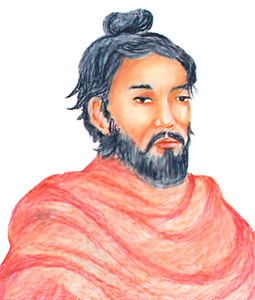
ABHINAVAGUPTA (s. VIII). Filósofo indio. Uno de los grandes representantes del shivaismo de Cachemir, fue discípulo de Sambhic Natha en Jullundur y alcanzó gran erudición. OBRAS: Bodhapacadaseka; Paramarthasara; Paratrimsika-vivarana; Isvarapratyabhijavimarsini, su principal obra, etc. Bib. K.C. Pandley, Abhinavagupta an historical and philosophical study.
tantrasāra - abhinavagupta - M30008
tantravaṭadhānikā - abhinavagupta - M30012
tantrāloka chapters 1 thru 14 - abhinavagupta - M10038
tantrāloka chapters 15 thru 38 - abhinavagupta - M10039
tāratantra - anonymous - M10040
īśvarapratyabhijñāvimarśinī - abhinavagupta - M00019
īśvarapratyabhijñāvivṛtivimarśinī Volume 1 - abhinavagupta - M00020
īśvarapratyabhijñāvivṛtivimarśinī Volume 2 - abhinavagupta - M00021
īśvarapratyabhijñāvivṛtivimarśinī Volume 3 - abhinavagupta - M00022
ghaṭṭakarparakāvya with commentary by abhinavagupta - kalidāsa - M30040
tantrasāra - abhinavagupta - M30008
tantrāloka chapters 1 thru 14 - abhinavagupta - M10038
tantrāloka chapters 15 thru 38 - abhinavagupta - M10039
paramārthacarcā - abhinavagupta - M30046
paramārthasāra - abhinavagupta - M00041
parātriśikāvivṛtī - abhinavagupta - M30009
parātrīśikālaghuvṛtti - abhinavagupta - M00042
bodhapañcadaśikā - abhinavagupta - M30045
mālinīvijayavārtika - abhinavagupta - M30014
ABHINAVAGUPTA. El gurú Çivaíta Kasmir (Ca 950-1015) sabio y adepto del linaje de Vasugupta. Entre sus escritos filosóficos tenemos: Pratyabhijïa Vimarshini y Tantraloka son básicamente importantes en el Çivaismo Kasmir. Tambien fue un teórico influyente en poesía, danza, drama y música clásica, se decía que había desaparecido dentro de una cueva cerca de Mangan con cerca de 1200 discípulos. Vease: KASMIR SIVAISMO.
Abhinavagupta () Abhinavagupta, el gran maestro de Triká
Abhinavagupta es sin duda alguna una de las personalidades más interesantes del medioevo indio (siglo XI). En él se combinan felizmente la erudición y una visión creativa capaz de renovar el bagaje cultural heredado. Su personalidad es además multifacética. La tradición india ha registrado en primer lugar su labor de crítico literario y recientemente está redescubriendo con gran admiración su contribución filosófica como representante de la escuela Trika del Shivaismo de Cachemira. Abhinavagupta fue además un sacerdote y un maestro espiritual con considerables responsabilidades religiosas.
Abhinavagupta:
Abhinavagupta y el Arte Tradiconal
Notas: La Edad de Abhinava Gupta y una breve historia de su descendencia.
No hay controversia sobre la edad de Abhinavagupta, como la controversia de Somanända y otros, esta es su propia historia. De acuerdo a su propia declaración, el vivió en Cachemira alrededor del final del siglo X y el comienzo del siglo XI A.D.
Abhinavagupta desciende del famoso Brahmana Attri Gupta, de quien se decía, vivió en Antarvedi, un nombre probablemente que implica una zona de la tierra que cae entre el Ganges y el Jumna. Habiendo logrado gran renombre como Shaiva fue invitado a la corte por Lalitäditya, un patrón del aprendizaje, quien gobernó sobre Cachemira desde 700 al 736 A.D., y establecido aquí. Muchas generaciones tras el, uno de sus descendientes, llamado Varäha Gupta, estableció su fama como un Shaiva de gran eminecia.
Como cosa rutinaria, tenía habilidad en el Shaiva Sästra llegando a ser el heredero de esta familia. Nosotros hemos leido tambien que Varäha Gupta tuvo un hijo, llamado, Narasimha Gupta, alias, Chukhala, quien, como su padre, fue un entusiasta devoto de Shiva. El fue el padre de Abhinavagupta, nuestro comentador del Parä-Triàshikä, "el gran erudito y maestro Shaiva y la dominante influencia de su propia y subsecuente edad en todas las materias relacionadas con el Shaivismo de Cachemira."
Abhinavagupta tuvo tres Gurus; Lakñhmana Gupta, Bhaööa Induräja, y Bhaööa Tota. Por otra parte, el estaba imbuido de los principios Shaiva Shasäna de su famoso padre de quien muy poco se conoce. Lakñhmana Gupta perteneció a la linea de escritores Shaivas los cuales comienza con Somanända, el fundador del Pratyabhijïä Shästra o la "filosofía apropiada del Trika."
Como Utpala, Abhinavagupta continuó minuciosamente el trabajo de Somanända. Nada era tan asombroso en el como el su versatilidad de genio. Escribió muchos libros sobre Shaivismo, los cuales se enumeran más abajo:
1. Paramärthasära,
2. Tanträloka,
3. Tantrasära,
4. Båhat-Ishvara-Pratyabijïä Våtti,
5. Ishvara-Pratyabhijïä Vimarshiné, Laghvé Våtti,
6. Krama-stotra,
7. Parä-Triàshikä Vivaraëa,
8. Kävya-Kautuka Vivaraëa,
9. Anuttara-Shataka,
10. Dehastha-Devatä-Chakrastotra,
11. Ghatakharparakulaka-Vivåti,
12. Paramärtha-Dvädashikä,
13. Paramärtha-Charchä,
14. Bodha-Païcha-Dashikä,
15. Prakaranastotra,
16. Comentario de Bhagavad-Gétä,
17. Mahopadesha-Viàshati,
18. Pürva Païchikä,
19. Dhvanyäloka-Lochana,
20. Näöya-Lochana,
21. Bharata-Näöya-Shästra-Tékä,
22. Mälinévijaya-Värttika
23. Bhairavastotram
Tomado de: http://muktalib5.org/DL_CATALOG/TEXTS/KSTS/KSTS018/DJVU/directory.djvu
Abhinavagupta
Imagen:http://www.virtuescience.com/abhinavagupta.html
Abhinavagupta took the way of direct communication for spreading his knowledge about the Shaiva philosophy and he took help of a number of teachers and saints of his contemporary time. This brought him the nickname, `Shankaracharya of Kashmir`. Abhinavagupta also became successful in possessing all the eight yogic powers that are explained in the Hindu Shastras and apart from that, he also had a vast knowledge about the `Six Signs` that make someone in the category of god. This was the main reason why some of his descendants and the other people did consider him as the `Shiva incarnate`.
Abhinavagupta gave a new and his own definition of karma and said that karma actually deals with space and time and according to him, actually there is no space. He became successful to make one thing clear that the realization of God is in fact, just the state of God`s consciousnes
Abhinavagupta
De Wikipedia, la enciclopedia libre
Abhinavagupta (circa 950 - 1020[1] [2] ) fue uno de los filósofos, místicos y estetas más importantes de la India. También se destacaba como músico, poeta, dramaturgo, exégeta, teólogo, y lógico[3] [4] - dueño de una personalidad politemática ejerció una influencia importante sobre la cultura de la India.[5] [6]
Nació en el valle de Cachemira[7] en el seno de una familia de estudiosos y místicos y estudió todas las escuelas de filosofía y arte de su época bajo la guía de más de quince maestros y gurús.[8] A lo largo de su extensa vida escribió 35 obras, la más extensa y famosa de la cuales es el Tantrāloka, un tratado enciclopédico sobre todos los aspectos filosóficos y prácticos del Trika y Kaula (conocido actualmente como saivismo de Cachemira). Otra de sus muy importantes contribuciones fue en el ámbito de la filosofía del esteticismo mediante su famoso Abhinavabhāratī, comentario del Nāṭyaśāstra de Bharata Muni.[9]
Referencias [editar]
- ↑ Triadic Heart of Shiva, Paul E. Muller-Ortega, page 12
- ↑ Introduction to the Tantrāloka, Navjivan Rastogi, page 27
- ↑ La llave de los Vedas, Nathalia Mikhailova, página 169
- ↑ The Pratyabhijñā Philosophy,
Ganesh Vasudeo Tagare, page 12 - ↑ Companion to Tantra, S.C. Banerji, página 89
- ↑ Doctrine of Divine Recognition, K. C. Pandey, page V
- ↑ Introduction to the Tantrāloka, Navjivan Rastogi, page 35
- ↑ Luce dei Tantra, Tantrāloka, Abhinavagupta, Raniero Gnoli, page LXXVII
Enlaces externos [editar]
- Muktabodha Biblioteca online - contiene muchas de las obras de Abhinavagupta en sánscrito incluyendo el Tantrāloka
- GRETIL: una colección de los trabajos originales de Abhinavagupta, contiene también otros textos de shaivismo de Cachemira
- Cuatro artículos biográficos sobre Abhinavagupta por Swami Lakshman Joo, Prof. K. N. Dhar,
R. K. Jalali y Geetika Kaw Kher - Bibliografía sobre Abhinavagupta por "The New Yoga"
- Aspectos de la teoría de la escritura de Abhinavagupta por David Peter Lawrence
- Abhinavagupta y la síntesis de la cultura de la India Ensayos, debates, ilustraciones multimedia
- Towards an integral appreciation of Abhinavagupta's aesthetics of Rasa (PDF), por Sunthar Visuvalingam
En otros idiomas
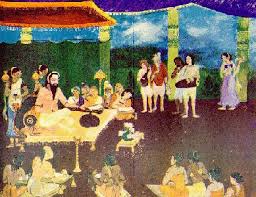 | 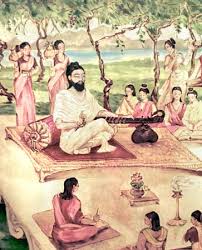 |  | 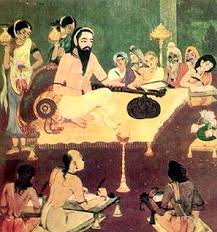 |
Abhinavagupta 363 x 450 - 33 KB - jpg virtuescience.com | |||
 |  | 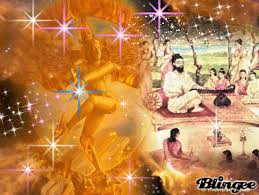 |  |
Abhinavagupta 275 x 303 - 20 KB - jpg ssubbanna.sulekha.com | ABHINAVAGUPTA 400 x 301 - 208 KB - gif anuttaratrika.com | Abhinavagupta 400 x 301 - 175 KB - gif vedic-yoga.blogspot.com | |
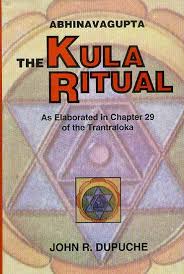 |  | 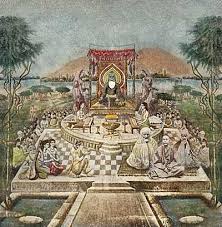 |  |
"De cualquier 200 x 257 - 23 KB - gif librodot.com | Pen picture of 400 x 408 - 42 KB - jpg abhinavagupta.net | ||
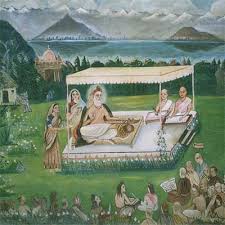 |  |  | 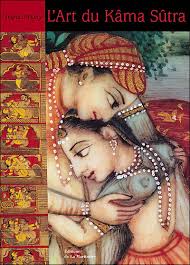 |
Abhinavagupta 400 x 400 - 27 KB - jpg abhinavagupta.net | Abhinavagupta 403 x 500 - 26 KB - jpg myspace.com | ||
 | 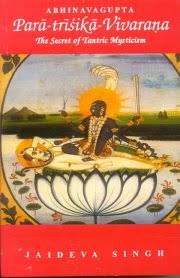 |  | 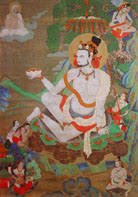 |
Vivarana by 180 x 278 - 16 KB - jpg vedicbooks.net |
 |  |  | 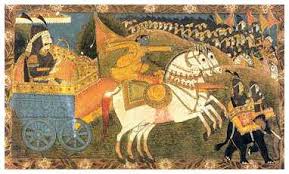 |
Abhinavagupta's 100 x 141 - 5 KB - jpg forsten.nl | Abhinavagupta 389 x 300 - 45 KB - jpg ssubbanna.sulekha.com | abhinavagupta, 530 x 733 - 461 KB - jpg myspace.com | |
 |  | 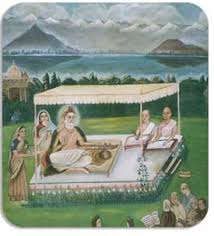 | 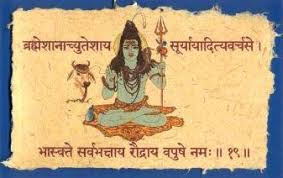 |
About 249 x 263 - 16 KB - jpg thenewyoga.org | Sri Abhinavagupta 208 x 220 - 15 KB - jpg heideggerindianthought... | Abhinavagupta 337 x 212 - 20 KB - jpg myspace.com | |
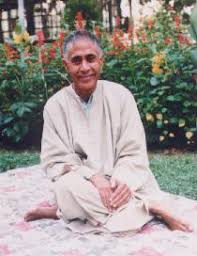 |  | 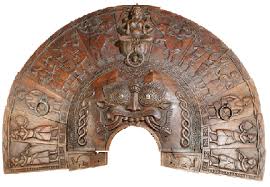 | 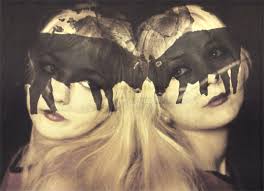 |
Swami Lakshman Joo 210 x 272 - 33 KB - jpg shaivism.net | Abhinava Gupta 528 x 807 - 179 KB - jpg daymix.com | Bhairavastava, 432 x 299 - 81 KB - gif bhairava.ws | |
 | 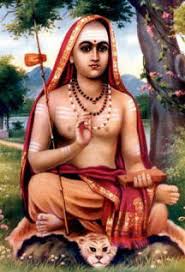 |  | |
abhinavagupta 89 x 33 - 1 KB - gif sanskrit-sanscrito.com.ar | abhinavagupta.jpg 363 x 450 - 43 KB - jpg natha-yoga.over-blog.com | ||
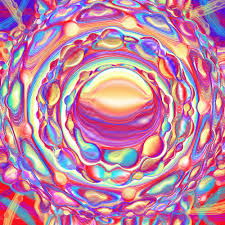 |  |  | |
Abhinavagupta 500 x 500 - 511 KB - jpg inannareturns.com | Abhinavagupta 80 x 110 - 5 KB - jpg agamayoga.com | (Abhinavagupta`s 100 x 154 - 4 KB - jpg dkpd.com |
Abhinavagupta - Wikipedia, la enciclopedia libre
Abhinavagupta (circa 950 - 1020 ) fue uno de los filósofos, místicos y estetas más importantes de la India. También se destacaba como músico, poeta, ...
es.wikipedia.org/wiki/Abhinavagupta - En cachéAbhinavagupta - Wikipedia, the free encyclopedia
Abhinavagupta (Kashmiri: अभिनवगुप्त) (approx. 950 - 1020 AD) was one of India's greatest philosophers, mystics and aestheticians. ...en.wikipedia.org/wiki/Abhinavagupta -
| | ||
Pen Picture
|
|
The following verses are known as the dhyana shlokas, taken from Madhuraja’s ‘Gurunatha Paramarsha’.(1) These verses are a pen-picture of Abhinava Gupta. May the glorious Dakshinamurti in the form of Abhinava, who is an incarnation of Shrikantha (Lord Shiva) and has come to Kashmir out of deep compassion, protect us. His eyes are rolling with spiritual bliss. The center of his forehead is clearly marked with three lines made with ashes. His ears look beautiful with Rudraksha. His hair is tied with a garland of flowers. His beard is long, and his body rosy. His neck, black because of its being besmeared with paste of camphor, musk, sandal and saffron etc. looks splendid. His long sacred thread is left loose. He is dressed in silk-cloth, white like the rays of the moon. In the yogic posture called vira, he is sitting on a soft cushion over a throne of gold with a canopy decked with strings of pearls, in an open hall full of crystals, beautiful with paintings, smelling extremely sweet on account of garlands of flowers, incense and lamps, perfumed with sandal etc., constantly resonant with both vocal and instrumental music and dance and crowded with female ascetics and saints of recognized spiritual power, Abhinavagupta sits resplendent in the center of a garden of grapes.
He is attended by all his pupils, such as Khemaraja etc., who are sitting at his feet with their minds concentrated, writing down all that he says. His two female attendants (Dutis) are standing at His sides, each with a jar full of water distilled from grain kept soaked in water for three nights. They have a box full of betels (tambula) in their right hand, and a fruit of citron and a lotus in their left. ------------------------ |
Página PRINCIPAL
OBRAS y AUTORES CLÁSICOS
Agradecimientos
Cuadro General
Disculpen las Molestias
| Conceptos Hinduistas (1428)SC |
|---|
Category:Hindu (mythology) (3256)SC | Category:Hindu mythology (3270)SC | Categoría:Mitología hindú (3288)SC (indice) | Categoría:Mitología hindú (videos) (3289)SC | Conceptos Hinduista (A - G) SK y SC (videos) (3294)SC Aa-Anc · Aga - Ahy · Ai - Akshay · Akshe - Amshum · Ana - Ancie · Ang - Asvayu · Ata - Az · Baa-Baz · Be-Bhak · Bhal-Bu · C · Daa-Daz · De · Dha-Dry · Du-Dy · E · F · Gaa-Gayu · Ge-Gy · Ha-He · Hi-Hy · I · J · K · Ka - Kam · Kan - Khatu · Ki - Ko · Kr - Ku · L · M · N · O · P · R · S · Saa-San · Sap-Shy · Si-Sy · Ta - Te · U · V · Ve-Vy · Y · Z |
| Conceptos Hinduistas (2919)SK | (2592)SK |
|---|
Aa-Ag · Ah-Am · Ana-Anc · And-Anu · Ap-Ar · As-Ax · Ay-Az · Baa-Baq · Bar-Baz · Be-Bhak · Bhal-Bhy · Bo-Bu · Bra · Brh-Bry · Bu-Bz · Caa-Caq · Car-Cay · Ce-Cha · Che-Chi · Cho-Chu · Ci-Cn · Co-Cy · Daa-Dan · Dar-Day · De · Dha-Dny · Do-Dy · Ea-Eo · Ep-Ez · Faa-Fy · Gaa-Gaq · Gar-Gaz · Ge-Gn · Go · Gra-Gy · Haa-Haq · Har-Haz · He-Hindk · Hindu-Histo · Ho-Hy · Ia-Iq · Ir-Is · It-Iy · Jaa-Jaq · Jar-Jay · Je-Jn · Jo-Jy · Kaa-Kaq · Kar-Kaz · Ke-Kh · Ko · Kr · Ku - Kz · Laa-Laq · Lar-Lay · Le-Ln · Lo-Ly · Maa-Mag · Mah · Mai-Maj · Mak-Maq · Mar-Maz · Mb-Mn · Mo-Mz · Naa-Naq · Nar-Naz · Nb-Nn · No-Nz · Oa-Oz · Paa-Paq · Par-Paz · Pe-Ph · Po-Py · Raa-Raq · Rar-Raz · Re-Rn · Ro-Ry · Saa-Sam · San-Sar · Sas-Sg · Sha-Shy · Sia-Sil · Sim-Sn · So - Sq · Sr - St · Su-Sz · Taa-Taq · Tar-Tay · Te-Tn · To-Ty · Ua-Uq · Ur-Us · Vaa-Vaq · Var-Vaz · Ve · Vi-Vn · Vo-Vy · Waa-Wi · Wo-Wy · Yaa-Yav · Ye-Yiy · Yo-Yu · Zaa-Zy |














No hay comentarios:
Publicar un comentario